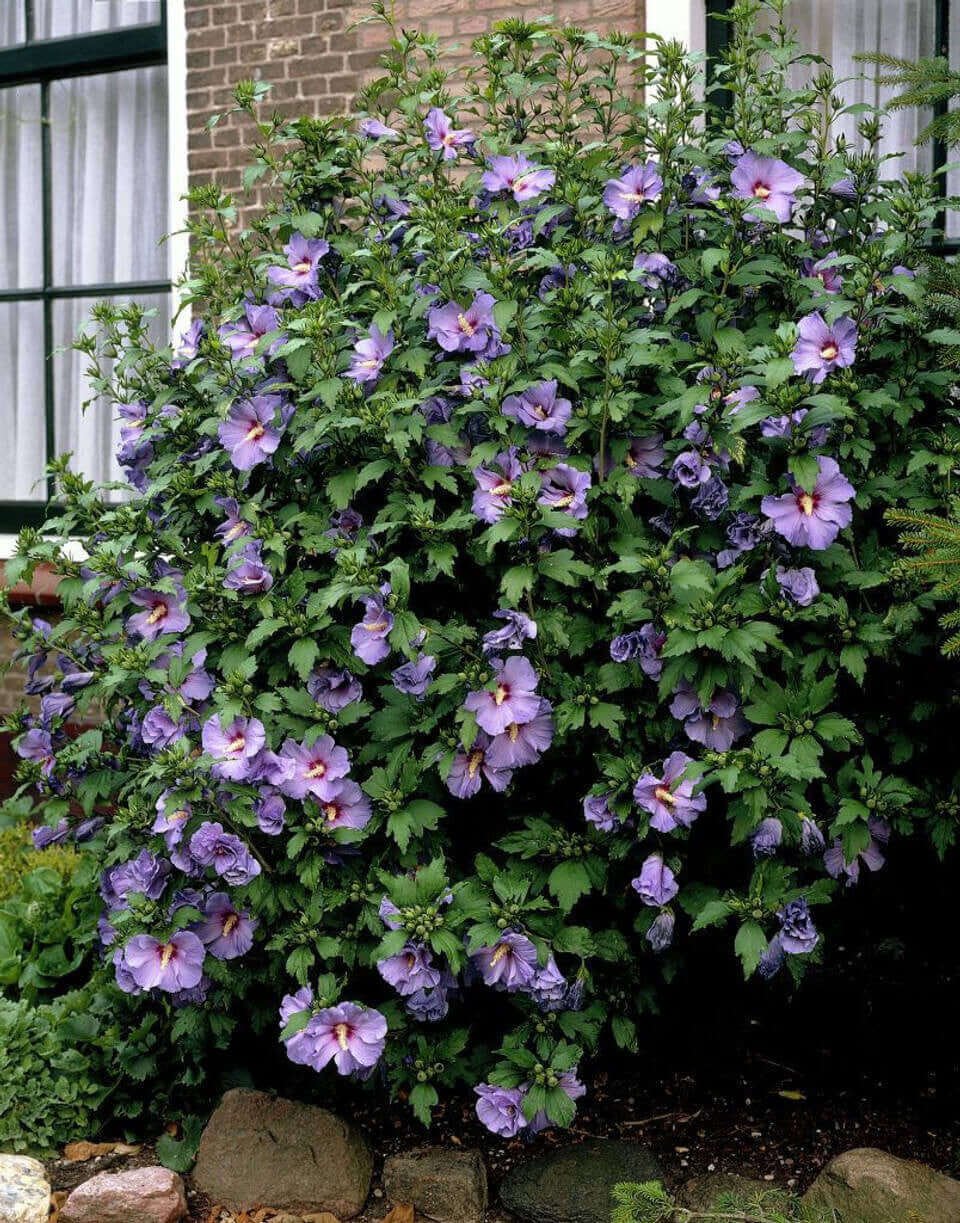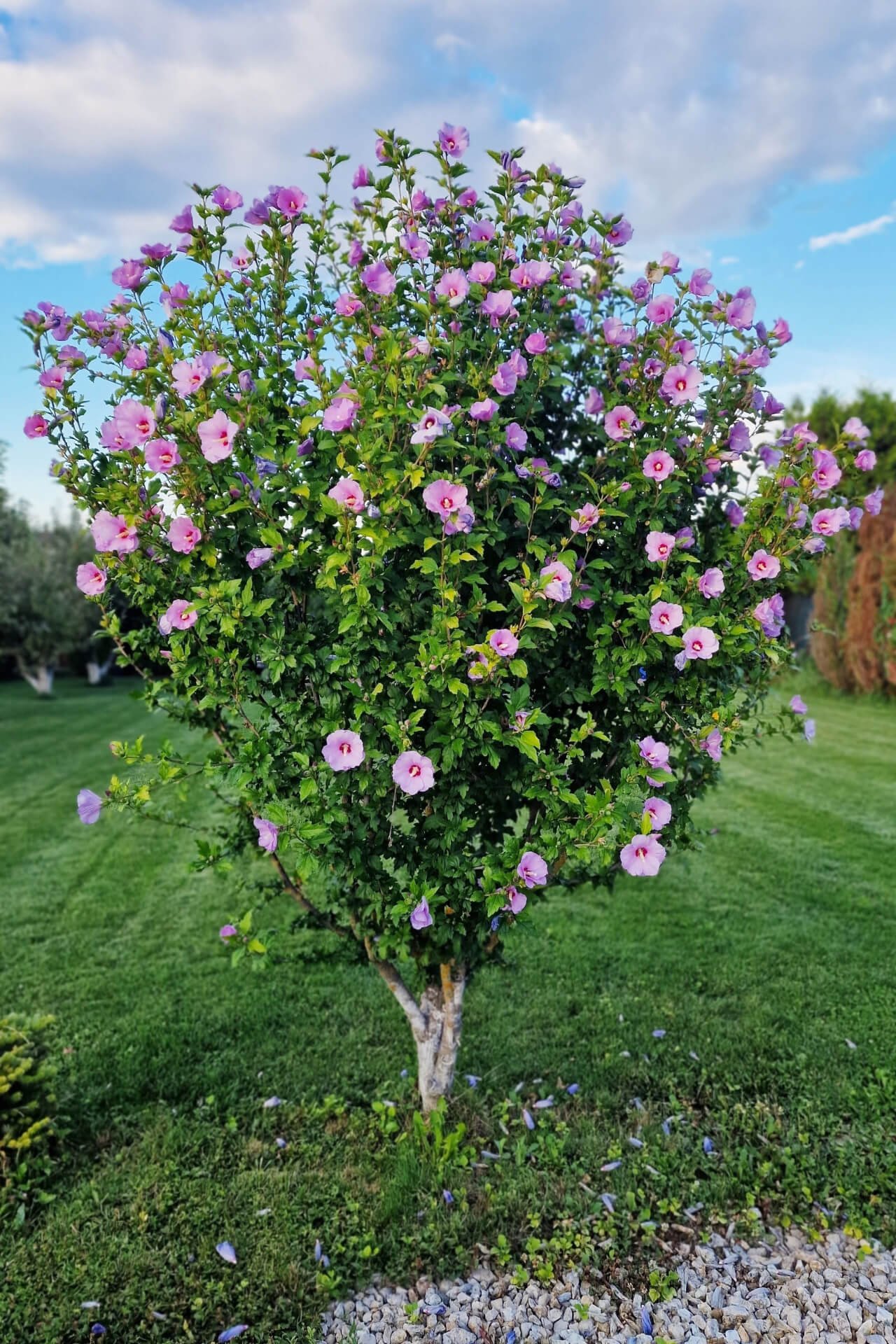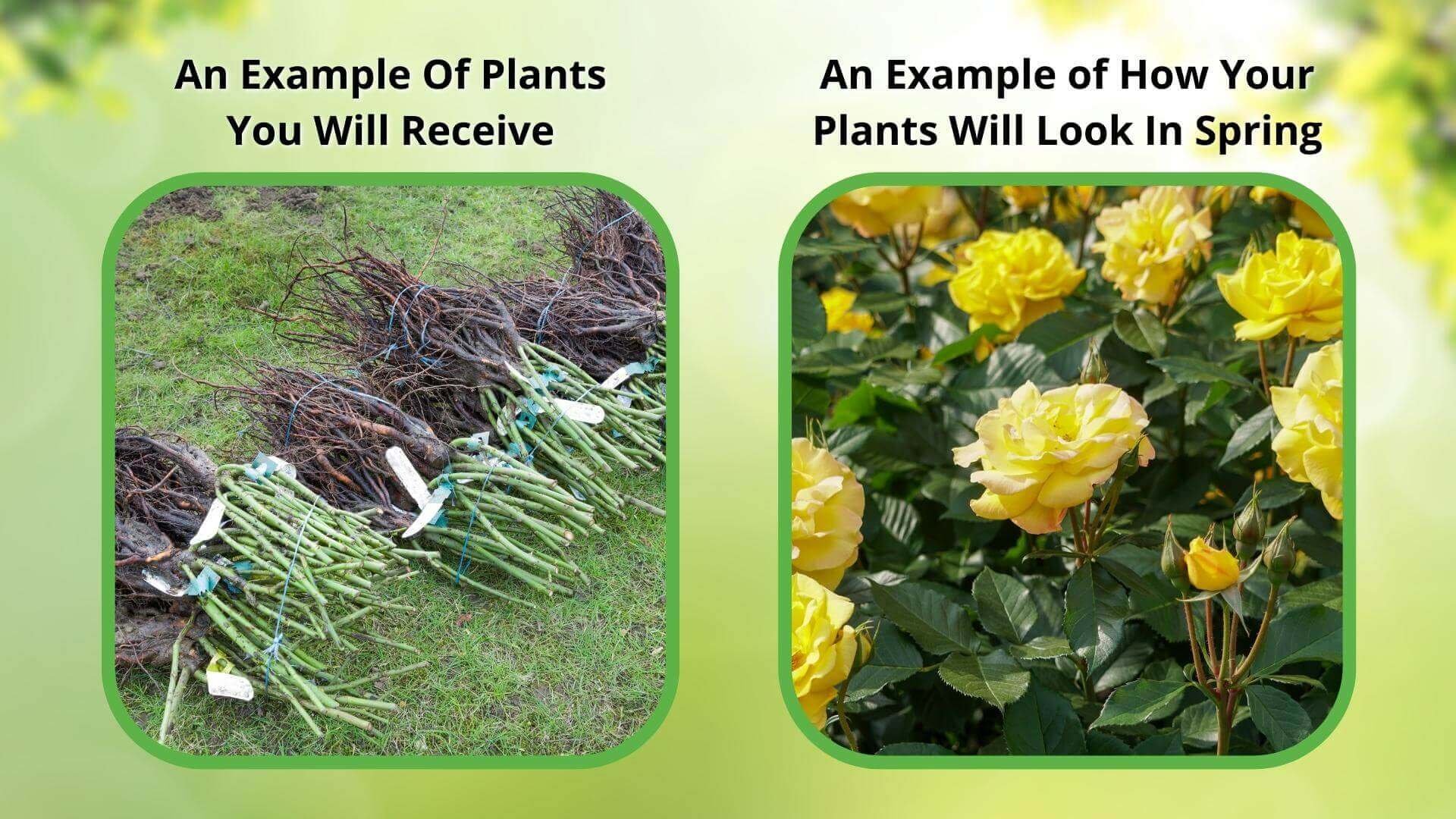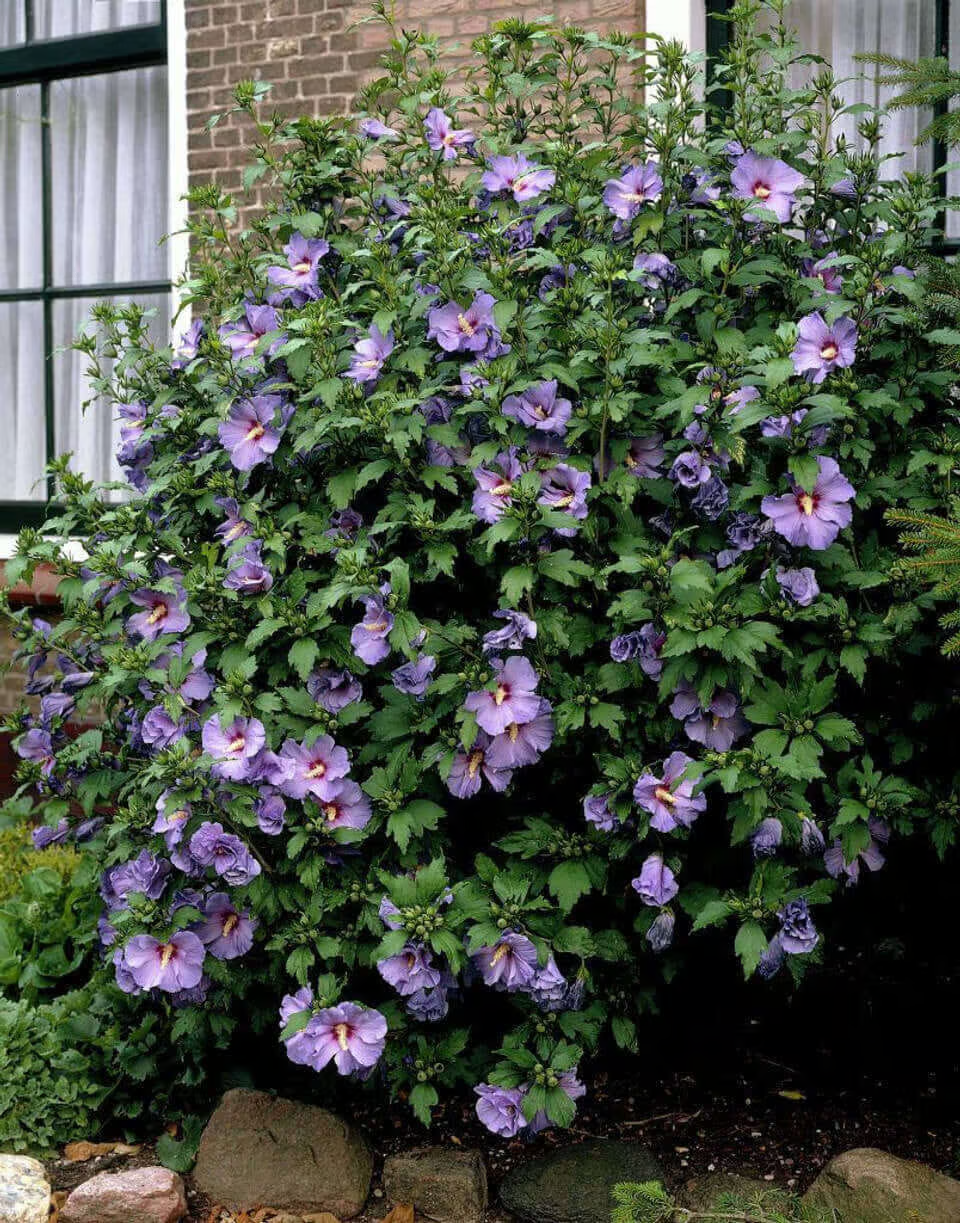



Purple Swamp Rose Mallow
Stunning purple-pink blooms
Attracts butterflies and hummingbirds
Thrives in wetland conditions
Thrives in
ZONE 4ZONE 5ZONE 6ZONE 7ZONE 8ZONE 9This plant ships:
May 251 Year Guarantee on all plants
Purple Swamp Rose Mallow - Hibiscus Moscheutos
The Purple Swamp Rose Mallow is a shrub known for its large, striking, funnel-shaped lavender flowers with a prominent central stamen and glossy green leaves. It is a popular ornamental plant. This shrub presents many advantages when incorporated into landscaping designs, offering a blend of aesthetic, ecological, and practical benefits that make it a prized choice among landscape designers and homeowners.
Hibiscus Moscheutos are stunningly gorgeous flowers characterized by their two different shades of lavender. They instantly add a sense of elegance to any yard and will keep returning year after year.
The Beautiful Flowers Of Purple Swamp Rose Mallow
The first thing you'll notice about these colorful flowers is that they're trumpet-shaped, and no other flowers look pretty like them. They're also sometimes referred to by their common name, rose mallow, although their name is a misnomer. Most of these flowers will grow into their characteristic royal hues but can also become pink, red, white, yellow, or orange. Either way, they open beautifully to put themselves on display.
Aside from the flower's petals, a cluster of white shoots out from the middle. This five-lobed capsule contains seeds and will excite your local bees.
In addition to the flowers, the shrub they grow on produces alternately grown leaves with lobed margins. The combination of these rich, dark green leaves and bright flowers creates a stunning contrast that would look fantastic on any property.
Provide a Home for Wildlife With The Purple Swamp Rose Mallow
Aside from looking gorgeous, planting one of these shrubs will also attract butterflies, hummingbirds, and bees to your yard. This makes a special treat for bird lovers, especially those who haven't been able to attract hummingbirds onto their property. Shrubs are also a vital part of the ecosystem and offer a place for pollinators to gather one of the main ingredients of life.
Make Your Yard Pop With These Stunning Shrubs
Whether you're a big fan of their purplish-blue color, want to attract wildlife, or want instant curb appeal, you'll get what you're looking for when you plant Purple Hibiscus. If you've ever driven down a street and witnessed flowers that took your breath away, you know exactly how these will make everyone else feel. They can't help being showy, and you'll be happy.
Where is the best place to plant them?
It prefers full sun exposure with moist to wet soil. It is suitable for planting in wetlands, near water bodies, ponds, or rain gardens.
What is the life cycle of them?
This plant grows from early spring to summer and even up to early autumn, develops seed heads in the fall, and dies in the winter but always returns from the roots.
Can you grow them from cuttings?
Yes, it is possible to propagate them from Softwood Cuttings that should be taken in early summer or mid-spring. If properly cared for, they are likely to form their roots and grow into magnificent plants.
How fast do the cuttings grow?
After getting a good root hold, the cuttings are very fast growers and will grow as much as several feet tall in their first year of growth. Their growth rate is influenced by matters concerning the soil, light, and water regularly provided.
Can you transplant them?
Indeed, it is flexible, and Purple Swamp Rose Mallow should be transplanted in the early spring or fall. Ensure it gets moist soil and enough sun, and then water the plant again to promote growth in the new place.
This Is How Your Plants Will Look upon Delivery

Bloom Season
Summer
Bloom/Foliage Color
Purple
Height at Maturity
Over 10 Feet
Care
Purple Swamp Rose Mallow thrives in moist, well-drained dirt and needs regular watering, particularly during dry spells. Prune dead or damaged stems in early spring to encourage new growth. It's resistant to pests and diseases, making it a low-maintenance choice.
Plant Reproduction
Purple Hibiscus spreads by sending out runners and seeds.
Plant bare-root shrubs during the more excellent spring or fall months, from November through April. Dig a hole twice as wide as the root system and slightly more profound than its height. Position the shrub so that the top of the roots is level with the ground, and put back the soil dug over the roots. Apply a 2-3 inch layer of mulch around the base to retain moisture and suppress weeds, ensuring the mulch does not touch the shrub's stem. Water regularly, especially during the first year, to establish strong roots. Prune shrubs as needed to promote healthy growth. In the spring, fertilize with a balanced, slow-release fertilizer suited to the specific needs of the shrub.
Shipping date depends on the date displayed and chosen when you order from the product's page.
We only accept returns on plants verified dead. If you think your plants have died, we offer a 1 year warranty, please use this File a Claim Link to verify dead plants and start with return warranty process.






Bold Color:
The Purple Hibiscus showcases vibrant, deep purple flowers that make a dramatic statement in any garden.
Long Blooming Period:
Enjoy months of stunning color, as the Purple Hibiscus blooms from late spring through summer.
Low Maintenance:
Easy to care for with minimal upkeep, the Purple Hibiscus thrives with basic watering and occasional pruning.
Versatile Landscaping:
Ideal for both garden beds and container planting, this hibiscus fits well in various garden settings.
Caring Tips
How do I care for my Purple Swamp Rose Mallow?
Each box contains detailed care instructions and information about your product. But here's the basics.
Care Tips
Purple Swamp Rose Mallow thrives in moist, well-drained dirt and needs regular watering, particularly during dry spells. Prune dead or damaged stems in early spring to encourage new growth. It's resistant to pests and diseases, making it a low-maintenance choice.
Light Requirements
Purple Swamp Rose Mallow thrives in full sun to partial shade. It prefers at least 6 hours of direct sunlight daily for optimal blooming, but it can tolerate some shade, especially in hotter climates. The full sun encourages vibrant blooms.
Hardy Planting Zones
4 • 5 • 6 • 7 • 8 • 9
Header
Use this content to share information about your store and products.
Frequently Asked Questions
How often should I water my plants?
How do I know if my plant is getting too much or too little sunlight?
What should I do to prepare my plants for winter?
What are the signs that my plant needs fertilizing?
How can I prevent pests from damaging my plants?
How do I choose the right plant for my climate zone?






